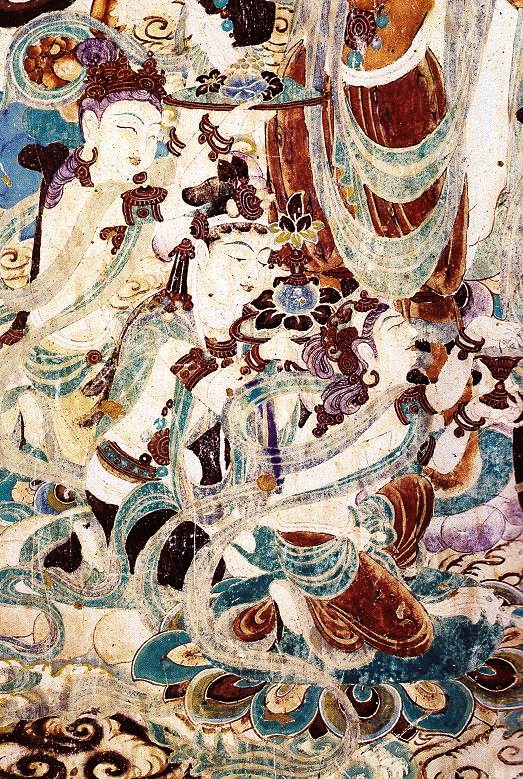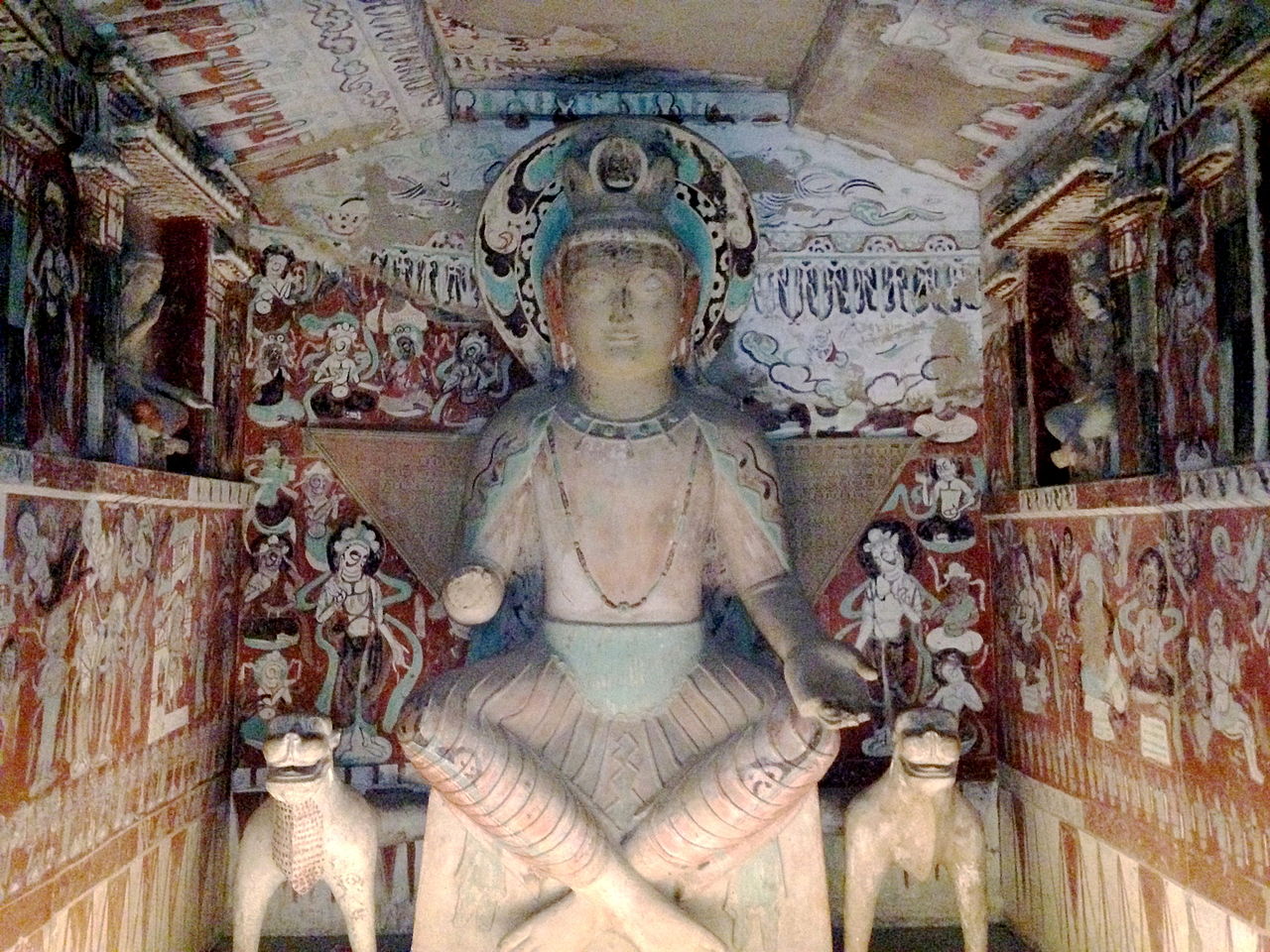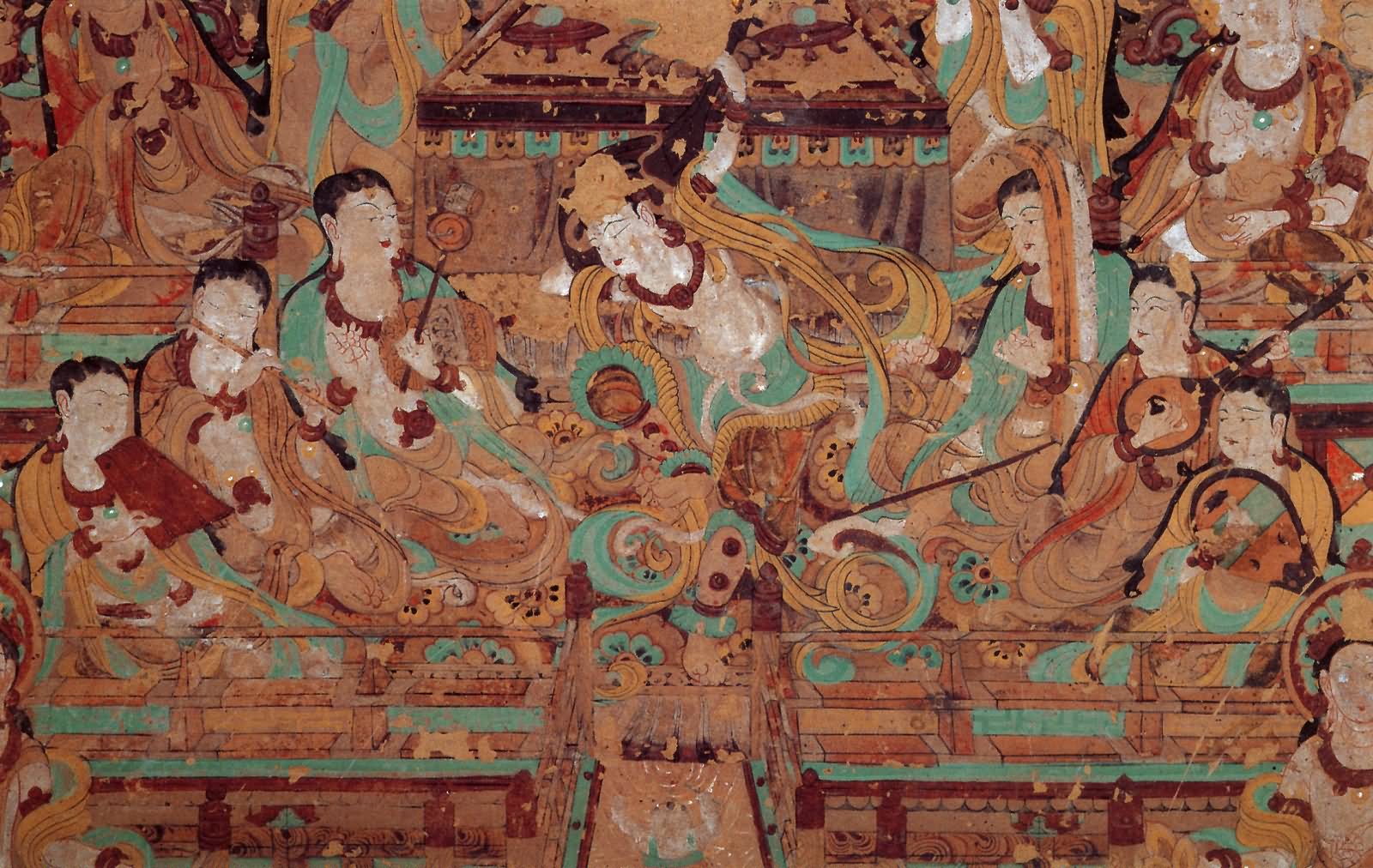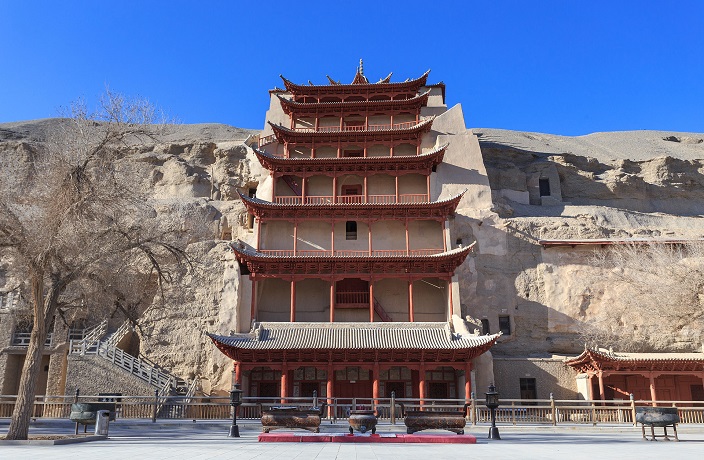Straddling four continents and a myriad of civilizations, the Silk Road has long symbolized the intersection of cultures. For over two millennia, commercial goods, arts and beliefs have traveled along these highways.
Located some 300 kilometers west of the western tip of the Great Wall, the desertsurrounded city of Dunhuang, with its rich repository of Buddhist art, is the perfect place to begin your Silk Road journey.

Image via Wikipedia
The Mogao Caves
The UNESCO World Heritage site of Mogao Caves is comprised of nearly 500 Buddhist cells. Carved into cliff sides in a river valley enveloped by the scorching Gobi Desert, these cells used to function as monastic retreats for Buddhist monks. The first cell dates back to the fifth century AD, and as the number of believers increased dramatically in the centuries that followed, art patronage also flourished.
Nowadays, with the heritage site receiving an estimated influx of 10,000 tourists every day, it's hard to imagine that the Mogao Caves were once abandoned entirely. From the 13th century until its modern rediscovery, the caves were left unoccupied. Precious murals, sculptures, and scriptures were barred behind wooden doors, only to be unveiled by archaeologists in the early 1900s.
The lavish mural paintings depicting the cycle of Buddhism are among the most iconic art created during the Mogao Caves' heydays, and you can still relish the medieval monks' impeccable artistry with the aid of flashlights when you visit.

Image via Wikipedia
The Mogao Caves heritage site is a 30-minute drive from central Dunhuang. Today, Dunhuang's demographic consists of a diverse mix of Hui Muslims, Tibetans, Kazakhs and Han Chinese, and you'll find ethnic restaurants and street vendors throughout the town. Delicious lamb chops, hand-pulled noodles and yellow noodles with donkey meat (a local specialty) are just some of the most delectable options you should try.
As impressive as the Mogao Caves are, the constant touristic noise and clamor somehow defeats the secluded nature of a religious site. For a more tranquil encounter with Buddhist art, head to the West Thousand Buddha Caves and the Yulin Caves, both are within driving distance from Dunhuang.
Another unmissable sight is the Crescent Moon Lake hertiage complex, a Buddhist temple set against an oasis in the midst of sand dunes. Desertification is an outstanding threat to the preservation of water here, and the local government has been refilling the lake since 2006 to maintain the structural integrity of the site.

Image via Wikipedia
To find out about great deals to the Mogao Caves, scan the QR code below and complete your details with the subject line 'Mogao Caves.'

[Cover image via Wikipedia]


















